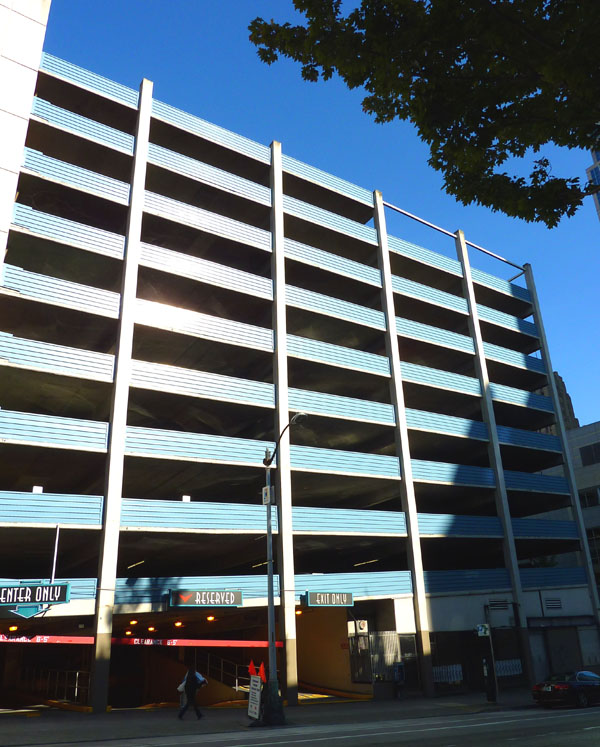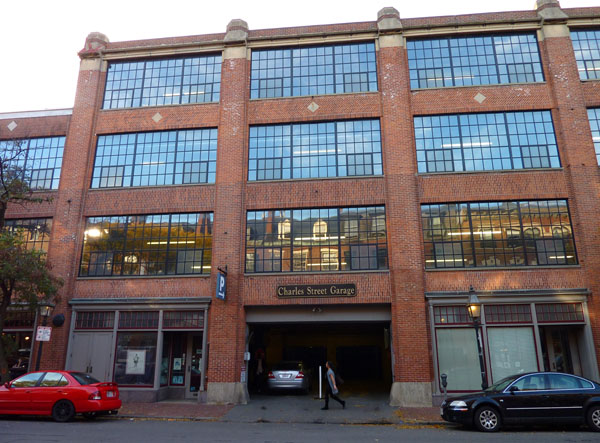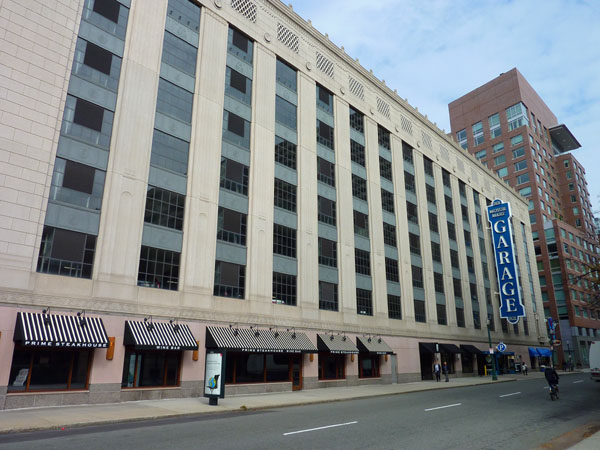Opposite Ends of I-90 Vol. 2: Parking Garage Edition

Usually they’re contemptible scars on the urban fabric, like the eye-popping piece of work in the photo above at 2nd and Union in Seattle. But they don’t have to be. The garage shown below is in Boston’s Beacon Hill neighborhood, and isn’t it the most adorable thing?

Here’s another in Boston’s downtown office core:

Excited yet? Yes, it’s lipstick on a pig, but unlike so many garages in downtown Seattle, at least it isn’t a total F.U. to the city.
Boston, like every U.S. city, also has it’s share of heinous parking garages. But in Seattle, downtown looks as if the City sponsored an ongoing heinous parking garage design competition back in the 1970s. It’s remarkable that there wasn’t more uproar over how soul-crushing these structures are; or if objections were raised, how they were so easily ignored by those who stood to profit.
Blame it on “Wild West” mentality. Compared to Seattle, Boston has far more deeply-rooted architectural and urbanist traditions that helped put a check on the infatuation with “progress” and the city-gutting march of the cult of the automobile (though of course not all battles were won). It’s the real kind of conservatism: the past and its connection to the present is valued—an essential balancing force in the development of any healthy culture.
But the West has always been more dominated by the laissez-faire mindset. Seattle’s historic midrise brick buildings were like swaths of old growth Douglas fir prime for exploitation, and the garages that were left in their place are about as beneficial to a true city as a wasteland of clearcut stumps is to a forest ecosystem.
Today we are still building hulking parking garages, but we usually try to do a better job with the lipstick—we put green roofs on them, for example, and even award them green building certification. And while these are positive steps, they don’t negate the fact that in terms of sustainable urbanism, parking garages are rotten at the core. Sacrificing our precious urban land and economic resources to buildings with the sole purpose of part-time car storage degrades the pedestrian realm, reinforces car-dependence, and ultimately moves the city in the wrong direction.
The simple solution: ban above-grade parking structures. And then start incentivizing redevelopment of the mess of city-soul-sucking abominations that are already on the ground.
>>>
[ This post is part of a series on Boston and Seattle that will be continued as long as no commenters are really mean. ]

